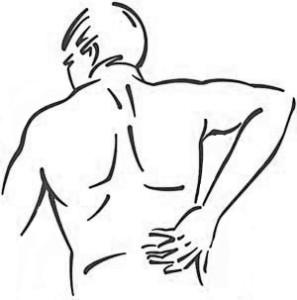 “Kinesiology” comes from the Greek word “kinesis” meaning motion, and “ology,” meaning the study of a science or branch of learning. Kinesiology then means the study of the principles of mechanics in anatomy in relation to human movement. The term “applied” means put to practical use.
“Kinesiology” comes from the Greek word “kinesis” meaning motion, and “ology,” meaning the study of a science or branch of learning. Kinesiology then means the study of the principles of mechanics in anatomy in relation to human movement. The term “applied” means put to practical use.
Dr. George Goodheart, the founder of Applied Kinesiology (AK) wrote:
“Applied Kinesiology had a simple beginning in 1964, based on the concept that muscle weakness is involved in most muscle spasms and, indeed, is primary.
Applied Kinesiology is based on the fact that body language never lies. The opportunity of understanding body language is enhanced by the ability to use muscles as indicators and satisfactory both to the doctor and to the patient.
The name of the game is to get people better. The body heals itself in a sure, sensible, practical, reasonable and observable manner. ‘The Healer Within’ can be approached from without.
Once muscle weakness has been ascertained, a variety of therapeutic options is available… The opportunity to use the body as an instrument of laboratory analysis is unparalleled in modern therapeutics because the response of the body is unerring; if one approaches the problem correctly, making the proper and adequate diagnosis and treatment, the response is adequate and satisfactory to both doctor and patient for a potential for recovery through the innate intelligence …of the human structure. This recovery potential with which he is endowed merely waits for the hand and heart and the mind of a trained individual to bring it into manifestation, allowing health to come forth; this is man’s natural heritage.”
So, Applied Kinesiology deals largely with functional health disturbances, as opposed to pathology (tissue breakdown). Although a chronic functional disturbance may ultimately lead to pathology there is a major difference in the diagnosis of the two.
We are concerned with and handle functional disturbances in the body. For example, not being able to bend over due to back pain, or not being able to turn your neck, or constant sore throats.
There is a muscle-organ correlation in this technique. For example, one muscle – the deltoids (on top of the shoulder) relate to the lungs. If the deltoid is weak, the lungs are not functioning well or congested. Rubbing the reflex point for the deltoid muscle will help the lungs to start working better. These are related on an energy basis via the acupuncture pathways.
If the deltoid is weak, the nutrition for it is vitamin C, which also helps the lungs. So, for each muscle, there is an organ related to it and a nutritional component as well. To fix the weak muscle and thereby help the organ function better, the reflex point or “switch” for that muscle is rubbed in a circular motion and this strengthens the muscle and it works better. The nutritional recommendation can also be taken and support the muscle and the organ too.
AK is a fantastic technique to get your body functioning better, and therefore, feeling better and getting healthier!
Quote reprinted from “Applied Kinesiology Volume 1” by David S Walther.











